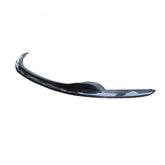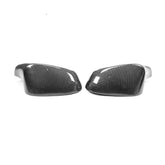Maintaining your off-road vehicle is crucial for ensuring its reliability and longevity, especially when navigating rugged terrain. Performing regular maintenance checks and addressing any issues promptly can help prevent breakdowns and keep you rolling on the trail. Here are some essential DIY maintenance tasks to keep your off-road vehicle running smoothly:
1. Check Fluid Levels
Regularly inspect and top up all fluid levels, including engine oil, transmission fluid, coolant, brake fluid, and power steering fluid. Low fluid levels can lead to overheating, component wear, and mechanical failure, so ensure all fluids are at the proper levels before hitting the trail.
2. Inspect Tires
Check tire pressure and tread depth before each off-road excursion. Adjust tire pressure according to the terrain you'll be navigating, lowering it for better traction in sand or mud and increasing it for improved stability on rocky terrain. Inspect tires for signs of damage or uneven wear and replace them if necessary.
3. Grease Moving Parts
Apply grease to moving parts such as suspension components, steering linkages, and drivetrain components to prevent friction and wear. Regular greasing helps maintain smooth operation and extends the lifespan of critical components, especially in dusty or muddy conditions.
4. Clean Air Filter
Clean or replace the air filter regularly to ensure proper airflow to the engine. A clogged air filter can restrict airflow, reduce engine performance, and increase fuel consumption. Clean reusable air filters with compressed air or water and replace disposable filters as needed.
5. Check Brakes
Inspect brake pads, rotors, and brake lines for signs of wear, damage, or fluid leaks. Replace worn brake pads and rotors and repair any leaks or damage to ensure optimal braking performance on the trail. Bleed the brake system periodically to remove air bubbles and maintain brake pedal feel.
6. Test Suspension
Test the suspension system for signs of wear, damage, or sagging. Check shock absorbers, springs, and bushings for leaks, cracks, or excessive play and replace any worn or damaged components. Ensure the suspension is properly aligned and adjusted for optimal handling and stability.
7. Inspect Steering
Inspect the steering system for signs of wear, looseness, or binding. Check steering linkage, tie rods, and ball joints for play or damage and replace any worn or damaged components. Ensure the steering system is properly lubricated and adjusted for precise control on the trail.
8. Clean and Lubricate
Regularly clean and lubricate exposed components such as hinges, latches, and cables to prevent corrosion and ensure smooth operation. Use a mild detergent and water to remove dirt, mud, and debris, and apply a silicone-based lubricant or corrosion inhibitor to protect metal surfaces.
9. Check Electrical System
Inspect the battery, wiring, and electrical connections for signs of corrosion, damage, or loose connections. Clean corroded terminals, tighten loose connections, and test the battery and charging system to ensure reliable starting and electrical performance on the trail.
10. Perform Visual Inspection
Perform a visual inspection of the entire vehicle, checking for loose or damaged components, leaks, or signs of wear. Pay attention to undercarriage components, drivetrain, and exhaust system, and address any issues promptly to prevent further damage or failure.

Conclusion
Regular DIY maintenance is essential for keeping your off-road vehicle in top condition and ensuring a trouble-free off-road experience. By performing routine checks, addressing issues promptly, and following proper maintenance procedures, you can keep your vehicle running smoothly and enjoy countless adventures on and off the trail. So, roll up your sleeves, grab your toolbox, and give your off-road vehicle the care and attention it deserves!










